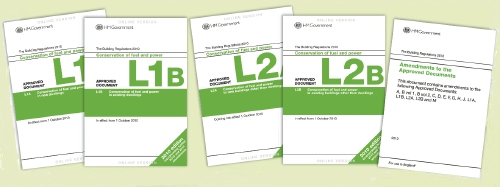Tracing the continuing development of Part L

The current Building Regulations were laid in 2010, and include Part L, ‘Conservation of fuel and power’, supported by four approved documents giving guidance on how to comply with the regulations, as well as two compliance guides. But Part L was once a simpler creation. Hywel Davies of CIBSE explains the history.
Regulation of energy use in buildings is a complicated and increasingly controversial topic. But it is not new. As long ago as 1962 provisions were made to control condensation in buildings, with implications for energy use. In 1972 this extended to energy-conservation measures in homes, and then, in 1974, following some difficulty with energy supply, these were extended to non-domestic buildings.
The cornerstone of the current system of building regulations is the 1984 Building Act, which received Royal Assent on 31 October 1984, with most of its provisions came into force on 1 December that year. The act was a major streamlining of many local regulations and London Building Acts, and aimed to consolidate these into one single piece of legislation. Section 1 of the act gave powers to the Secretary of State to make Building Regulations ‘for the purposes of securing the health, safety, welfare and convenience of persons in or about buildings…, [and] furthering the conservation of fuel and power’.
This covers Part L, which is part of a table in Schedule I of the Regulations. Initially Part L 1985 was a ‘functional requirement’ to ‘make reasonable provision for the conservation of fuel and power’, with a simple approved document giving guidance on how to comply. This largely entailed use of the elemental approach to fabric efficiency, since renewables at the time were still considered rather ‘alternative’.
Part L was updated in 1995 and then again in 2002. It focused initially on energy efficiency and then in 2002 on CO2. In 2002 the approved document was also divided into domestic and non-domestic sections — ADL1 and ADL2, respectively, and for non-domestic buildings a carbon performance calculation methodology was introduced, for those who wanted to adopt such an approach.
Then, in 2003, the Energy Performance of Buildings Directive (EPBD) was adopted. This required EU member states to adopt a whole-building calculation method for assessing the carbon emissions of new buildings and gave them three years in which to do this. And so the whole-building carbon emissions calculation became a requirement, not an option. To deliver it, the Simplified Building Energy Model, SBEM, was created.
In 2006 Part L underwent a revolution. Out went the elemental method, in came SBEM (or, for dwellings, SAP) as the way to show compliance. For SBEM this required calculation of carbon emissions and comparison with a ‘notional building’.

To assist the industry, the approved documents divided again, this time into ADL1A and ADL2A for new domestic and non-domestic buildings, with ADL1B and ADL2B for refurbishment in the respective buildings. To assist further, a domestic and non-domestic compliance guides were adopted, giving additional guidance on how to follow the new whole-building EPBD regime.
It is perhaps easy to forget that Part L 2006 was the biggest change to energy-conservation requirements in buildings in over 20 years and, arguably, the biggest single set of changes ever adopted in one set of regulations. At a stroke it did away with the elemental method beloved of many smaller builders, and brought in a small army of SAP assessors. It also introduced carbon-emissions targets for non-domestic buildings, rather than just energy-efficiency requirements.
It is also easy to forget that at that time the ‘Merton rule’ was making waves, with local-authority planners prescribing requirements for a certain percentage of energy on a development to be delivered from on-site renewables. Whilst it was adopted from the best of intentions, and to drive the uptake of such technologies, it had the unintended side effect that a building that met Part L by being a good passive building using less energy and emitting less carbon could still fall foul of planning. And sometimes the solution was to install ‘renewable’ systems to satisfy the planners, which in practice were not effectively commissioned (allegedly not even connected in some cases) and either operated badly, or not operated at all, whilst a less effective and higher emissions back-up was used routinely.
Now, as we debate the road to ‘zero carbon’, such development-specific additional requirements are a far greater concern. There is a real risk that these additional requirements, outwith the Building Regulations, will drive outcomes which may not lead to reasonable provision for the conservation of fuel and power, but undermine good fabric design in pursuit of renewables — forgetting the original functional requirement to be energy efficient and attempting to second guess designers. Perhaps, almost 30 years on from the 1984 Building Act, we need another look at how we deliver a single coherent set of technical building regulations in England.
Hywel Davies is technical director with the Chartered Institution of Building Services Engineers.







